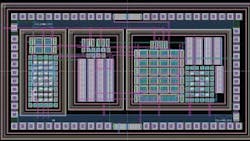Solution Snapshot: Amplifier protects electronics from extreme temps
Electrical engineering researchers at the University of Arkansas, Fayetteville, have designed and tested an electronic microamplifier that can operate directly in space without protection from a “warm box” — an enclosure used during space missions to protect electronic circuitry from extreme temperatures and radiation. Their findings were presented at the 2009 IEEE Aerospace Conference held during March in Big Sky, Mont.
The new amplifier is able to function consistently and with stability at extreme temperatures, from -180° to 125° C, saving both power and space required for electronics circuitry. Researchers believe that the new design will contribute to development of electronics and computer systems that can survive without protection in extreme environments.
“This and several other designs focus on the wide-temperature operational characteristics of sensor based, signal processing circuits,” says Alan Mantooth, professor of electrical engineering. “But our device is the first fully differential amplifier circuit designed specifically for extreme temperatures, including those in the cryogenic region. Some of our designs are fully operational down to -271° C.”
The device, made in a commercially available semiconductor process, has a power supply of 3.3 V and uses two common-mode feedback circuits to better control the voltage of both the input and output stages independently. Using these techniques, the scientists were able to construct an amplifier that provides a large differential gain across both wide frequency and temperature ranges.
Under Mantooth's direction, the engineers developed a device with three distinct sections including an input stage, output stage, and their respective common-mode feedback circuits. The input stage connects directly to two voltage signals; the difference between the input signals is amplified in the input stage and further amplified in the output stage.
Common-mode feedback circuitry ensures that both input and output stages are only amplifying the difference of the input signals and cancelling anything that is common between them. Using independent common-mode feedback circuits for the input and output stages allows for more fine-tuning and a higher quality output signal, explains Mantooth. For more information, visit www.aeroconf.org.
